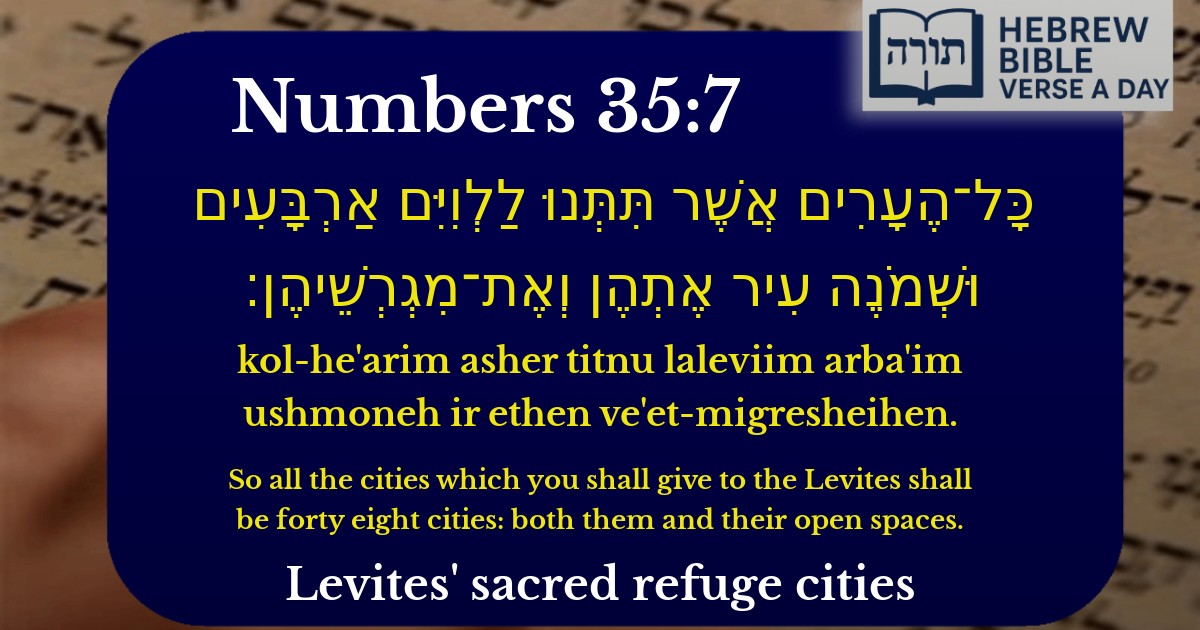Join Our Newsletter To Be Informed When New Videos Are Posted
Join the thousands of fellow Studends who rely on our videos to learn how to read the bible in Hebrew for free!
Hebrew Text
כָּל־הֶעָרִים אֲשֶׁר תִּתְּנוּ לַלְוִיִּם אַרְבָּעִים וּשְׁמֹנֶה עִיר אֶתְהֶן וְאֶת־מִגְרְשֵׁיהֶן׃
English Translation
So all the cities which you shall give to the Levites shall be forty eight cities: both them and their open spaces.
Transliteration
Kol-he'arim asher titnu laleviim arba'im ushmoneh ir ethen ve'et-migresheihen.
Hebrew Leining Text
כׇּל־הֶעָרִ֗ים אֲשֶׁ֤ר תִּתְּנוּ֙ לַלְוִיִּ֔ם אַרְבָּעִ֥ים וּשְׁמֹנֶ֖ה עִ֑יר אֶתְהֶ֖ן וְאֶת־מִגְרְשֵׁיהֶֽן׃
כׇּל־הֶעָרִ֗ים אֲשֶׁ֤ר תִּתְּנוּ֙ לַלְוִיִּ֔ם אַרְבָּעִ֥ים וּשְׁמֹנֶ֖ה עִ֑יר אֶתְהֶ֖ן וְאֶת־מִגְרְשֵׁיהֶֽן׃
🎵 Listen to leining
Parasha Commentary
📚 Talmud Citations
This verse is quoted in the Talmud.
📖 Arakhin 33b
The verse is cited in a discussion about the cities given to the Levites and their surrounding open spaces, as part of the broader topic of Levitical cities and their sanctity.
📖 Sotah 48b
The verse is referenced in the context of discussing the distribution of cities to the Levites and the significance of the number forty-eight.


The Forty-Eight Levitical Cities
The verse (Numbers 35:7) states that the Levites were to receive forty-eight cities along with their surrounding open spaces (migrashim). This allocation is significant in several ways according to traditional Orthodox Jewish sources:
Purpose of the Levitical Cities
Rashi explains that these cities served a dual purpose:
The Number Forty-Eight
The Talmud (Arachin 33b) derives significance from the number forty-eight:
The Open Spaces (Migrashim)
The Rambam (Hilchot Shemitta 13:2-3) elaborates on the laws concerning these open areas:
Spiritual Significance
The Kli Yakar (Numbers 35:7) offers a deeper interpretation: